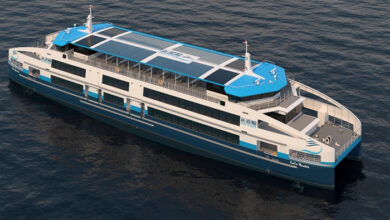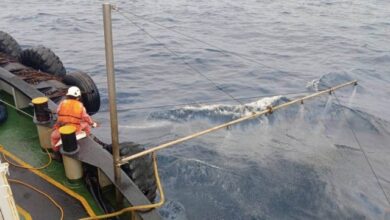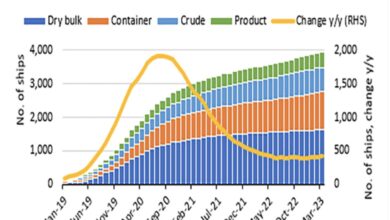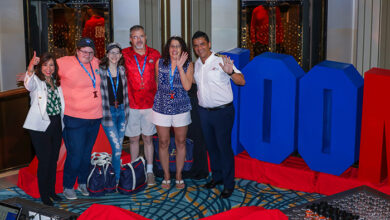CMA CGM Gives Boxship Aerodynamic “Nose Job”
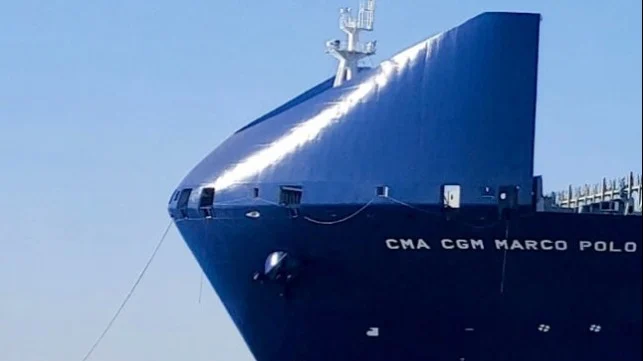
In social media postings on Friday, France’s CMA CGM confirmed what observers along the shoreline had been spotting for weeks – one of the company’s containerships got a “nose job.” Far more than cosmetics, the carrier says it is aerodynamics. They are following a growing trend in the industry as more carriers are testing the massive windscreen with the belief that they will reduce their fuel consumption and in turn the vessel’s emissions and carbon footprint.
While the concept has been drawing a lot of attention since observers noted them appearing on the bow of large, modern containerships from Ocean Network Express (ONE) last fall and more recently CMA CGM, the idea has been around the industry for years. What’s new is that they seem to be getting more aerodynamic, curved in their shape, and also rising higher than some of the earlier versions.
Being called bow or windshields, none of the lines have issued full details or any dimensions on the versions they are now testing. Pictures of the CMA CGM Marco Polo appear to show it rising the full height of the box stacks at the other edges and a lower center portion curved to direct the wind. The version seen on the ONE vessel rises the full height of the stack and is curved as well but squarer in its profile.
Go with the wind! ?️
Our CMA CGM Marco Polo has been equipped with a new prototype of windshield that required 6 months of development and installationThe Purpose? Improve her aerodynamics, therefore reducing her fuel consumption and carbon footprint! ?
— CMA CGM Group (@cmacgm) February 17, 2023
CMA CGM said it has been researching the concepts and conducting studies for some time to develop its approach. They said the version which was placed aboard their ship took six months of development and installation. It was placed aboard the CMA CGM Marco Polo, a 187,6245 dwt boxship built in 2012. The 1,299-foot vessel has a capacity of 16,000 TEU and is currently deployed on a route crossing the Atlantic from the Mediterranean and serving U.S. East Coast ports.
“If the results are conclusive, the same windshield will be installed in other CMA CGM vessels,” the company said in its social media postings.
Japan’s Mitsui O.S.K. Lines reported in 2017 that it had completed a two-year test of earlier versions of the wind screen. At the time it was lower and followed more of the bow curve. The company said it was expecting to save as much as four percent on fuel consumption with the wind deflector.
Last fall, a spokesperson for ONE said the bow windshields were “fitted on ONE Trust and ONE Tradition to enhance the vessels’ aerodynamics. We are at the trial stage, exploring this approach to potentially reduce fuel consumption and greenhouse gas emissions.” Both ONE Trust and ONE Tradition were operating on the route connecting the Far East and Europe.









